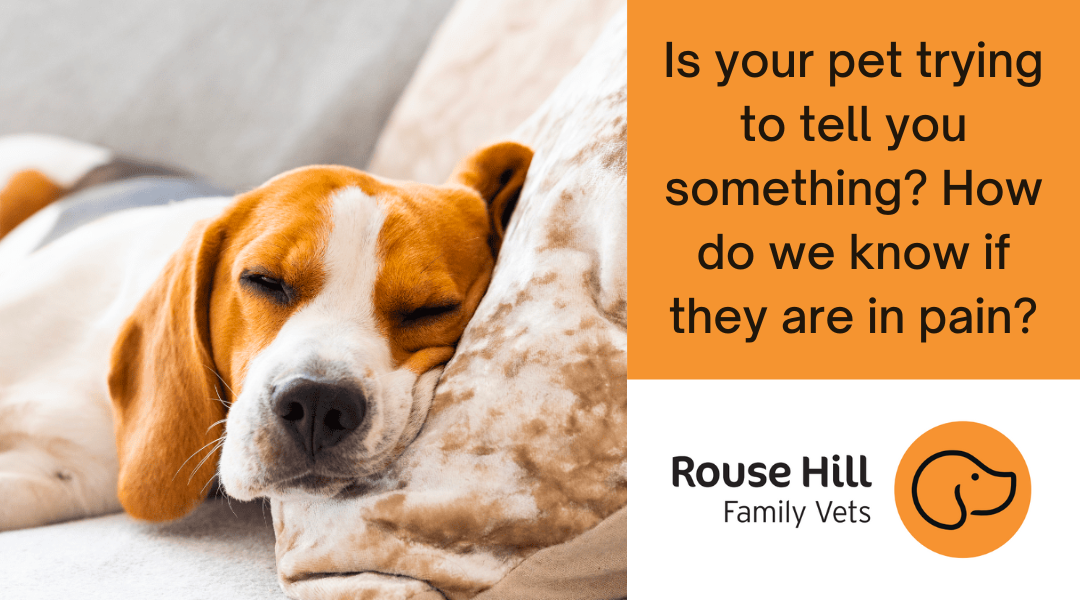For years, I have had clients tell me that their pet is slowing down and it’s just old. Our pets don’t have the verbal vocabulary to tell us they are feeling stiff and sore. This doesn’t mean they aren’t trying to tell us – we just need to learn how to listen to them.
Signs of pain are often subtle and appear gradually over time. Dogs are much more obvious than cats when it comes to displaying their discomfort, but even then, dogs are exactly screaming from the rooftops telling us they are uncomfortable.
When it comes to chronic osteoarthritis, by the time we recognise lameness (limping), the pain has already made its way up into the moderate classification.
So often I hear “My pet is limping, but they aren’t in pain…” or are they? A lot of people don’t realise or consciously think that there is a good reason their pet is not using their leg normally. If their leg felt normal and pain free they wouldn’t be limping. So the vast majority of the time limping = pain/discomfort.
Then they will concede, “well yes they’re limping but they aren’t crying so it can’t be too bad…” or can it? When I broke my foot I cried initially but didn’t continue crying all of the time until the pain went away weeks later. As a general rule we don’t cry all of the time when we are injured, so crying alone is not a good indicator of pain.
“But they still get excited and run on all four legs when they really want something, so it can’t be too bad…” but does that mean it’s not painful? When I had my broken foot (hairline fracture), if someone waived $100,000 at me and told me to run to them to get it I probably would have done that. If the motivation is great enough then they are still going to use that sore leg.
To better understand the signs of pain that our pets show us I want you to think about what it’s like when you have a sore back, hip or knee and you are sitting on a really comfortable couch. You’ve finally got comfortable and then someone tells you that there is a delicious piece of chocolate cake or glass of wine waiting for you in another room. There is no question that you want it, but now you’ve got to go about getting up. You wouldn’t necessarily cry out in pain. It’ll take you longer than normal to get up, you might be a bit more awkward but you won’t always moan or groan, especially if this has been going on for a while, you would probably have accepted that this is your new normal. Once you get up, it might take you a minute or two to warm up and get moving more normally.
In addition to this, once you collect your delicious piece of chocolate cake or glorious glass of wine, you would have to lower yourself slowly back down onto the couch, fluff the pillow around to make yourself comfortable. Uh oh. Now you need to pee… at this point you would consider how badly you need to go. Like can I wait a bit longer and avoid having to get up again?
These behaviours are similar to what is seen in our aging pets who are experiencing osteoarthritis pain. Dogs and cats will take longer to find a comfortable position to lay in. They might be slow to get up and stiff when they first start moving after laying or sitting for a while. They might hold on and avoid going to the toilet until the last minute as they know it’s uncomfortable to get up. This means they are more likely to have toileting accidents as they leave it to the last minute to get up and then find it harder to move to get to the toilet so they don’t make it outside or to the litter tray in time. They might struggle to find a comfortable position in their bed and become restless.
So, if you are concerned that your pet is is slower to rise, limping or moving less freely than they have in the past, book an appointment so we can give them a check and talk you through the numerous options we have available to keep our pets comfortable, pain free and happy in their twilight years.

